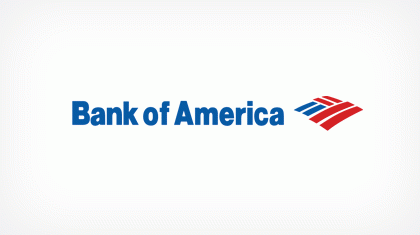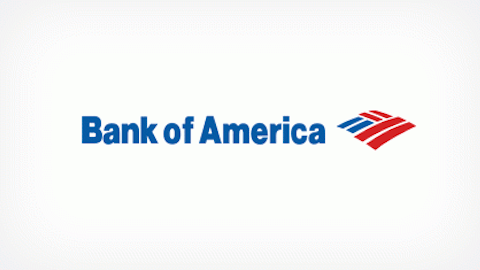On February 1 of this year, the Dow Jones Industrial Average edged past 14,000, a hurdle it had not cleared since October 2007. A lot happened in that span of time, for both the Dow and most of the companies that make it up, including Bank of America Corp (NYSE:BAC).
Much like the Dow, B of A is resurgent: rising from the ashes of the financial crash to become an investor darling. At this notable point in both the Dow’s and B of A’s history, I thought it might be a good time to stop for a second, take a deep breath, and have a look at where B of A’s been, where it is now, and where it might be going.

At the start of 2007, B of A’s share price was $53.33. The company was riding high. Yes, there was the general sense that something undesirable was going on in the housing market, but no one was panicking yet. The subprime-mortgage fueled collapse of Bear Stearns was still more than a year away.
Back then, CEO Ken Lewis was a superstar. In 1998, as head of regional player NationsBank, he engineered the takeover of the much larger B of A, and then went on an acquisition spree — which included FleetBoston Financial and MBNA — that would eventually make B of A the biggest bank in the country.
But it in January of 2008, Lewis and his team made the tragic stumble the bank is still trying to recover from: the purchase of Countrywide Financial, whose subprime-mortgage laden books would eventually destroy Bank of America Corp (NYSE:BAC)’s balance sheet. This would lead to an initial $20 billion federal bailout, and start the downward spiral of the bank’s share price, which would hit its low point of $3.19 on March 6, 2009.
This is now
Lewis was also responsible for another costly acquisition: Merrill Lynch. In much the same way that JPMorgan Chase & Co. (NYSE:JPM) swooped in to rescue Bear Stearns from its investing missteps, B of A bought Merrill Lynch — saving it from insolvency and at the same time giving B of A a strong investment banking arm.
And though Merrill’s terrible books ended up requiring the superbank to gulp down another $20 billion in federal bailout funds, on balance, Merrill has given Bank of America Corp (NYSE:BAC) the strong investment-banking business it never had. The bank’s Global Wealth and Investment Management division had record net income of $578 million in the fourth quarter of 2012, giving the bank $2.2 billion for the year, up 29% from 2011.
Ken Lewis was replaced by current CEO Brian Moynihan in December 2009. Given what Moynihan had to work with, he’s done an admirable job in stabilizing and starting to turn B of A around. In the fall of 2011, B of A said that it planned to cut 30,000 jobs, part of a larger package of slimming and streamlining operations that investors could only applaud.
And B of A was the S&P 500’s best performing financial stock of 2012, giving investors who got in at the start a 100%-plus gain on their money. The bank is also profitable — especially when it’s not paying out claims related to financial-crisis related abuses. In the fourth-quarter of 2012, the bank made $700 million in net profit; it would have made much more, had it not had to pay out $2.7 billion to Fannie Mae, part of a more than $10 billion settlement to settle claims over troubled mortgages.
This is what may never be again
Speaking of mortgages and things resurgent, we’re currently in the nascent stage of a resurgent housing market. With Fed chairman Ben Bernanke’s push to boost demand for home-lending through his third round of quantitative easing, there’s a lot of money to be made in home lending, and B of A is missing out.
In the fourth quarter of 2012, mortgage loan originations for JPMorgan were $51.2 billion. Wells Fargo & Company (NYSE:WFC) originated $125 billion in mortgages in Q4 ; Wells is the country’s largest home lender, in fact. But B of A only originated $75.1 billion in home mortgages for all of 2012.
I can understand B of A being gun-shy of getting back into the home-lending game, but this isn’t the mid-2000s: So far as we know, subprime lending is not currently an issue. And so long as the bank is on top of its own lending practices, there is safe and easy money to be made in home lending right now, and into the foreseeable future. JPMorgan and Wells get this, and B of A needs to as well.
I’m still not convinced all the bank’s crisis-related chickens have come home to roost, but I do think B of A is slowly but surely being turned around, thanks in no small part to Moynihan’s strong, patient hand. Still, $12.17 — the bank’s current share price — is a far cry from that lovely pre-crisis price of $53.30. And even with a Dow at 14,000 or beyond, it still may never make it back to that — but $12.17 sure as heck beats $3.19.
The article B of A and Dow 14,000: Then and Now originally appeared on Fool.com and is written by John Grgurich.
Fool contributor John Grgurich owns shares of JPMorgan Chase. Follow John’s dispatches from the bleeding heart of capitalism on Twitter @TMFGrgurich. The Motley Fool recommends Wells Fargo. The Motley Fool owns shares of Bank of America, JPMorgan Chase, and Wells Fargo.
Copyright © 1995 – 2013 The Motley Fool, LLC. All rights reserved. The Motley Fool has a disclosure policy.



